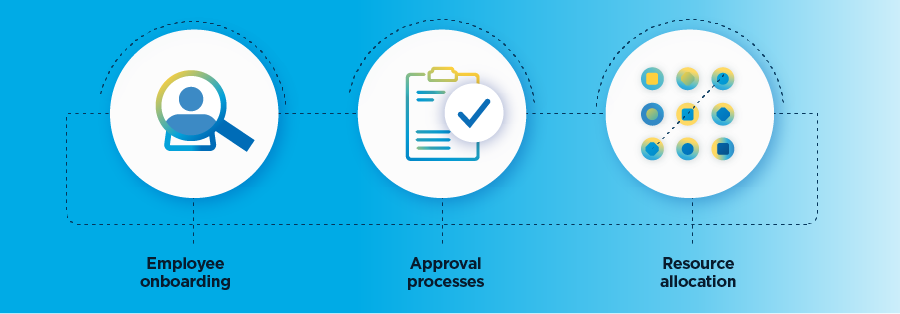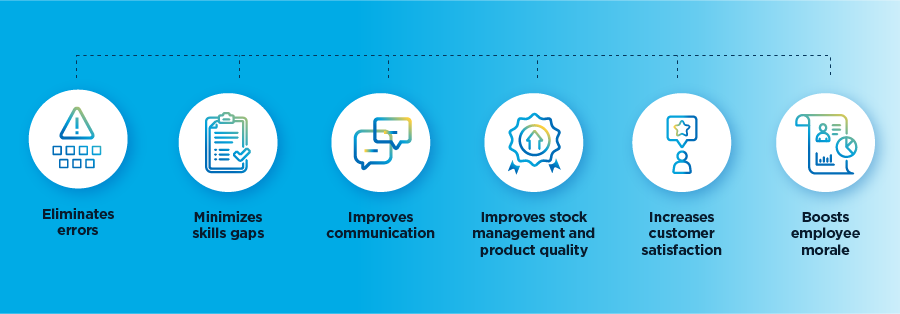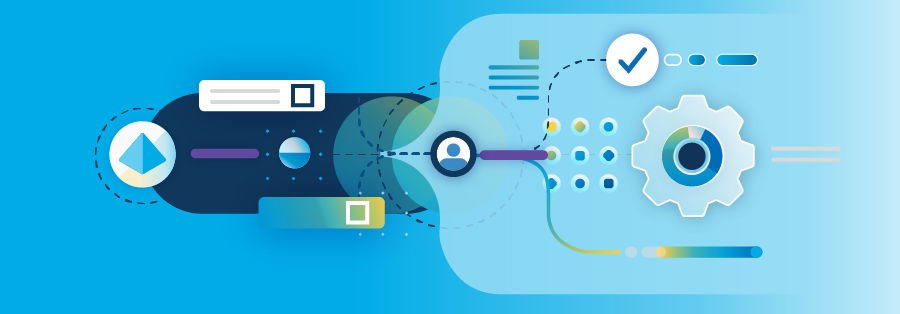Find A Process Improvement Methodology That Works

A business process is like a cup of coffee; any will do if you need a caffeine fix, but a good cup of coffee brewed to perfection? That’s what you want. And that’s how you can look at business process improvement initiatives. It’s taking that next step from simply having a business process that works to make one that works as best as it can. It’s the art of improving your businesses over time.
Markets and technology are constantly changing, and there’s no room for inefficiencies and slowdowns. Are your business processes robust and flexible enough to adapt?
In this guide, we’ll cover:
- What business process improvement is.
- How you can use business process management (BPM).
- How to use a continuous improvement model.
- Different methodologies for improving your business processes.
What Is Business Process Improvement?
Business process improvement (BPI), often seen through the lens of business process management (BPM), is the continuous improvement and reengineering of business processes. It involves identifying, analyzing, and optimizing your process performance and improving quality over time.
The goal of business process improvement is to ensure everything continually runs at peak levels in the interest of sustainability, profitability, and customer service. Process improvement doesn’t only focus on problems in existing processes, such as bottlenecks, but it aims to improve future process performance so you can stay competitive.
Let’s go back to that cup of coffee. When you first start making your coffee, you might grind the beans too fine, burn the milk in your latte, or use too much sugar. But if you look at the recipe and identify each step, and where it may be lacking, you can refine your recipe until you have that perfect latte every morning. That’s how business process improvement works. It’s going through the steps and finding incremental improvements along the way with the goal of an optimal final result.
What is a business process improvement software?
One of the most well-known BPI software is BPM, which orchestrates workflow automation. An example is intelligent automation (IA), which deploys digital workers to automate processes and streamline workflows.
What is business process management (BPM)?
BPM is a methodology that can also be applied in technology to allow business teams to evaluate their current processes, find ways to streamline them and adapt to changing business needs.
How can I improve my automated business processes?
As a technology, BPM brings together people, processes, and business process automation.
SS&C | Blue Prism® Chorus BPM allows users to rapidly build and automate processes, optimize workflows, create a digital experience for customers, and accelerate straight-through processing.
It’s a suite that brings together the following capabilities:
- Digital process automation
- Project management and work orchestration
- Case, rules, and content management
- Omnichannel interactions
- Operational analytics
- Role-based workspaces
What are the types of processes to improve?

You can apply process improvement, or BPM, to most departments across your organization, and in each instance, your business process improvement methodology may vary. But some use case examples might include:
- Employee onboarding: A slow recruitment process means your organization might not be getting the best candidates, and this can reflect poorly on your human resources (HR) department. By refining and automating new hire onboarding, you can ensure employees get all the starter equipment they need and that your HR team has all the required documentation. This will help your new employees get into their roles sooner, and assure them that your organization runs streamlined processes, which also saves on resources, time, and employee workload.
- Approval processes: Approvals and requests can take a long time to move through a manual system. First, a person must upload the information and then send it to a manager for approval. Once the manager approves it, they then must submit it to the payment department, which manually inputs the data. For time-sensitive documents or expense payments, this can take a long time. By improving this process with BPM, you can set approvals to follow an automated workflow that’s also tracked for better auditability.
- Resource allocation: BPM gives users an overview of employees’ workloads so you can ensure tasks are balanced according to capacity. This can also be applied to IA digital workers.
What does business process improvement look like?

Here are some process-specific examples of what an agile methodology can do for your work:
- Eliminates errors: Manual data entry is vulnerable to human errors. By automating these repetitive tasks, you can reduce the number of backlogs and rework for employees. BPI helps you to identify areas where these issues most often occur so you can rectify them.
- Minimizes skills gaps: A digital workforce is available 24/7 without vacation or sick days. This can relieve the skills gap and labor shortages many organizations face. It also saves you on resources and time spent on training. BPI is also an opportunity for staff to expand their skillsets and uncover new ways to bring automation and process improvement together.
- Improves communication: Good communication is critical to an enterprise’s success, yet it’s often one of the first to break down. BPM orchestrates people and processes by connecting disparate communication channels into one, centralized location. That means employees (and customers) always receive pertinent information on time.
- Improves stock management and product quality: By employing continual improvement processes, you can implement testing methods to ensure your products are high-quality every time. BPM can also help streamline process ordering and supply chain management so you can organize your stock and make sure you’re ordering the right amount to suit customer demand.
- Increases customer satisfaction: When you produce higher-quality products and services to your customers on time, you’re building brand loyalty, which can increase revenue for your business.
- Boosts employee morale: Employee work can be streamlined by BPM, meaning they’re wasting less time on tedious work and dealing with fewer dissatisfied customers. Plus, BPM helps you manage their work capacity, so your employee engagement goes up and they don’t get burned out. This will also save your organization from employee churn by improving your overall company culture.
Why does business process improvement matter?
Efficient business processes help develop a better environment for employees, resource allocation, and customer experience.
Poorly defined processes can lead to problems such as:
- Unhappy employees are stuck doing boring, repetitive, and error-prone tasks
- Unhappy customers receive poor-quality products or services
- Wasted resources and poor environmental, social, and governance (ESG) standing
- Constant rework, duplicating effort, and wasting manual effort
- Missed deadlines, lack of governance, and potential fines from non-compliance
- Costly and time-consuming work takes up employee time that could be spent on higher-value initiatives
What Is the Continuous Improvement Model?
A continuous process improvement model is any cycle of monitoring and making ongoing improvements to a process. There are varying methodologies on how to accomplish this, which we’ve described in the next section.
What Are the Methodologies for Business Process Improvement?
You can be focused on improving processes within a business, but there are formal methodologies you can put into company-wide initiatives to help move your business strategy along.
PDCA
The Plan Do Check Act (PDCA) cycle is the iterative process of planning, doing, checking, and acting on your processes with the goal of improving them. This is the general process improvement technique and can be scaled as the implemented processes expand and develop.
Kaizen
Kaizen, meaning ‘change for better’ in Japanese, is a mentality and a practice encouraging business users to identify and reduce waste, improve process flow, and increase value in day-to-day activities. Kaizen can be focused on improving a single process or expanded to encompass an entire workflow.
Agile management
Agile management mobilizes flexible processes to rapidly adapt to customer feedback, market changes, and so on. It works best for small, specific processes to swiftly deploy better services, activities, or products.
TQM
Total quality management (TQM) is a business process improvement methodology focused on delivering value to the end customer. Employees must do their due diligence to drive customer satisfaction and seek out long-term business success and a higher level of quality.
Value stream mapping
Value stream mapping gives organizations a visual representation of how value is created and delivered across the entire process, which can then help them optimize the flow of value and create a more efficient and predictable system.
Six Sigma
Developed by Motorola engineers, Six Sigma uses a data-driven approach of reviewing process analytics and performance to address inefficiencies and improve the end product. Its core tools aim to define, measure, analyze, improve, and control processes (DMAIC).
Lean
Lean, developed by Toyota, focuses on optimizing a process by cutting out the low-value steps. It was designed to shorten the order-to-cash cycle and involved defining how end-users see value, analyzing the process to identify low-value steps, removing or modifying those steps, and repeating that cycle until the organization obtains better efficiency and effectiveness.
Lean Thinking management
Lean Thinking or Lean Six Sigma combines the two efforts of using data to develop process maps of the entire process and removing those of lower quality from the operations. It emphasizes value and productivity, so any process not adding value to the customer or company will be cut from existing workflows to save resources and time.
While there is more than one form of process improvement you can apply, the common goals of all these methodologies are to improve your company performance by allocating resources better, streamlining workflows, and transforming end-to-end processes.
What Are the Techniques for Process Improvement?
Business process improvement techniques include setting a goal, strategizing, involving people from across your business, finding the right technology to suit your needs and budget, then continuously improving and learning as you go. Let’s look at how you implement business process improvement step-by-step.
What are the steps in business process improvement?

Business process improvement involves a systematic approach. So, what are the best practices for improving processes within your business?
- Setting business goals: Align your efforts with your organization’s ideal outcomes, such as cost reduction or improved customer satisfaction.
- Gathering data to map processes: Manually done, you can assign employees, business analysts, or subject matter experts (SMEs) to gather data on specific processes, also called business process mapping. Task mining and process mining are technologies both well suited to gathering information on current processes and they’re automatic, so you can offload that responsibility from your people. The difference between task and process mining vs process mapping is that the latter is done by a person, while the former can be automated.
- Analyzing performance: Collate all the business process documentation, including insights and maps of all formal processes, and identify inefficiencies, delays or redundancies. Technologies like process mining will help you do this automatically. Bring in other people from across the business who can help you gather insights and perspectives on which processes can be improved.
- Performing root cause analysis: Find out what’s causing the underlying issues in these processes and root them out.
- Prioritizing improvements: Now decide which improvements will have the biggest impact on your business first and optimize those. Keep in mind factors such as return on investment (ROI), cost savings, and time savings.
- Implementing changes: Put your improvements into action. Make sure your people know their roles and responsibilities as these changes happen.
- Continuously monitor: As with all BPI techniques, continue to track your changes and measure your process performance to see how further improvements can be made.
What are business process improvement tools?
As we mentioned above, you can discover more about your as-is processes with task and process mining.
- Task mining delves into the granular steps taken within a task to complete it, including keystrokes and mouse clicks, and it’s often run on a user’s desktop.
- Process mining uses event log data for accurate process maps that show how specific processes are executed and identify improvement opportunities, such as bottlenecks or where automation can most effectively be applied.
Look at SS&C | Blue Prism® Capture to automatically produce a Process Definition Document (PDD) of your current processes. It will help you reduce development time.
Find a Solution That Fits
A business process improvement solution is whatever suits your business goals. Find a methodology that fits with your people, processes, and capacity.
Chorus BPM gives you complete visibility into your people and processes so you can manage projects more easily and streamline your workflows.
Get started with SS&C Blue Prism to improve your business processes quickly and effectively.